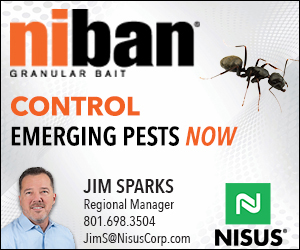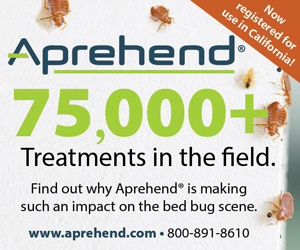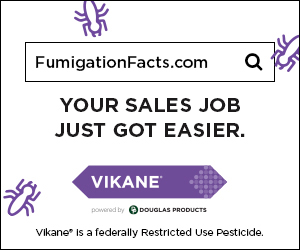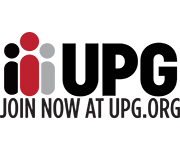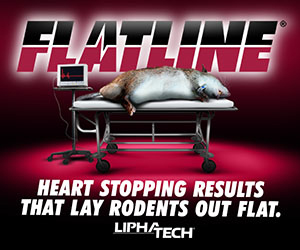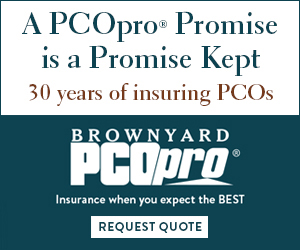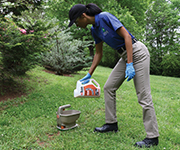 |
||||||||||||||||||||||||||||||
|
June 2021
|
||||||||||||||||||||||||||||||
|
New Members
Upcoming Events
Board of Directors & Annual Meeting — VirtualPCOC will host our 4th Quarter Board of Directors Meeting virtually on June 23, 2021 @ 11:00 am. You should have received an email with Committee, BOD and Annual Meeting times and links.
September Board of Directors Meeting — IN PERSONOur first in person meeting since COVID! We will have our first in person meeting at The Carlsbad Westin. The schedule below is tentative and may change (the dates will stay the same): Thursday, September 23 Golf Tournament — 1:00 pm Tee Off Friday, September 24 Committee Meetings — 8:00 am to 12:00 pm Room reservation links and more information will come out soon! We are so excited to meet up in person again and hope that you can all join us! CAPMA caught in the community
Liphatech provides a large selection of products that are registered in California and are not restricted like second generation anticoagulant rodenticides (SGARs) to help PMPs handle rodent control challenges in the region including:
Flatline, along with Liphatech’s entire California rodent control solutions portfolio, are available from authorized distributors to PMPs in structural pest control management. To learn more, visit liphatech.com/flatline or contact Vince Romao, Liphatech Western District Sales Manager at 404-788-0892.
Volunteer Corner
Do you have a favorite recipe that you would like to share with PCOC and their members?For our next fundraising endeavor, we will be putting together a one-of-a-kind cookbook that will be available to purchase. What a great gift for family members and clients! Please send your recipe, with all instructions, and a picture (if you would like to include) to Karen at karen@pcoc.org or you can mail it to the PCOC office at 3031 Beacon Blvd, West Sacramento, CA 95691. We are looking for the following categories: 1. Appetizers 2. Side dishes 3. Breakfast 4. Main entrées 5. Desserts 6. Cocktails 7. Cleaning tips Please feel free to contact Karen with any questions.
Preferred Partners
As we wind down toward the final event of the year, we normally celebrate our Annual PCOC Expo at this time. While we won’t be meeting in person, we anticipate that this will be our last virtual board meeting and look forward to seeing all of you next year at Disneyland! This also marks a time where we change leadership for the new year! There couldn’t be a tougher time to be President of PCOC and a special thank you goes out to Tom Graston for his steady leadership during this challenging time! We also congratulate incoming President Dean Wiley as he assumes his new role in the coming year! We’re glad to have both of them involved so don’t hesitate to reach out and express your appreciation! Chris Reardon
District meetings
Tips For Managing Your Website’s Pest Control BlogBest practices for Web Marketing change frequently, but one strategy remains supreme: managing a blog. Writing a blog is an excellent way to build your brand in the pest control industry, drive links to your Website, and improve your relevance online. Like any tool, you get the most out of it when you use it correctly and thoughtfully. The process of setting up your blog will vary based on how your Website was built and how it’s managed. WordPress is one of the most popular platforms for Websites, in part because of its seamless blog management interface. The real work comes in implementing certain management tips to ensure you’re getting the most from your website’s pest control blog. It’s Not Word Quantity, It’s Word QualityMost companies post to a blog to improve their search engine performance; when your site has lots of informative content about the pest control industry and services, Google tends to reward you with high rankings when your pest removal and prevention services are being searched. It’s for this reason that you shouldn’t stress about a word count when writing blogs. The most important factor is writing content that is rich with information on the pests and rodents found in your local California area. If having a word count helps with your writing process, consider 300 words (about 2/3 of a page, single-spaced) a minimum. The content should be relevant to what local Californians face when in need of your pest control services. Place yourself in their shoes and ask yourself “Why should I care?” If your content provides readers with an answer to that question, they will be more engaged and stay on your website longer. Pro Tip: Be specific to your company’s brand. Having content that is similar or identical to other pest control blogs won’t get you far with improving your online presence. Write In Your Customer’s Language Blogs can be a great place to answer frequently asked questions, highlight trends that customers should know, and debunk myths that get spread around too often. When you’re thinking about what to write, always consider your customers and prospects. At the end of the day, blogs are marketing tools and should be treated as such. Try not to get too technical with your writing and keep your vocabulary to a level that a beginner would understand. Your blog’s visitors are definitely reading to learn something, but they shouldn’t need to keep a dictionary with them to keep up! One tactic we recommend is to use common customer questions as blog topics and titles. Examples include “What pests are common in the fall in Sacramento, CA?” and “How to diagnose a termite problem in Los Angeles?” Not only do these catch the eye of interested readers, but they also help boost your search engine performance. More often than not, prospects will type questions into a search engine to learn more about their issue. Google may just serve your blog post to these searchers if your content is relevant and reliable. Post ConsistentlyTo really make your blog work for you, you’ll need to post regularly. You should plan to post new blogs to your site once or twice a month. Google loves to see a site that is consistently updated and maintained. Adding fresh content via a blog is an excellent way to boost your brand and show readers and search engines alike that your company is relevant. Finish Your Blogs with a Call to ActionIn keeping with the tradition of a blog as a marketing tool, make sure that your blog posts are giving your prospects something to do. There are a few ways to go about leading your readers to a desired action. If your post is about a new technology or appliance, your last paragraph should maybe highlight an area of your site with product information. If your post is about how maintenance is a necessity for pest prevention, you should include your company’s phone number or a link to a Contact/Scheduling page. Without being too sales-oriented, your blog should at the very least indicate that you are ready to help in any way you can. It’s up to you to decide what the best next step should be for them. Maintaining a blog is a powerful marketing tool to pick up in 2021. If you have questions about blog management, or if you’d like to go over your marketing strategy for this year, Market Hardware is here to help! We offer Web Marketing consultations and can help you figure out how to up your game this year. Give us a call today or reach out to us via our contact form to learn more. Market Hardware is happy to offer Web Marketing consultations — give us a call to learn more! Contact us today if you’re interested and want more information! You can email PCOC@markethardware.com or call (888) 381-6925. The Claims Advocacy Approach to Workers’ Compensation
The claims advocacy model for handling workers’ compensation claims has been a growing trend the past few years.
What is Claims Advocacy? Claims advocacy sets itself apart from more traditional compliance-oriented claims handling systems. It aims to create a claims culture where the focus is on nurturing trust between employees and management, where access to benefits is simple, and the structure is supported with executive-buy in, organizational values and efficient systems. Specifically, claims are easy to file, there is ease of access to medical specialists and medications, and there is always help navigating the healthcare maze. Trust is key. Inherent Conflict A fundamental characteristic of the claims advocacy approach is the shift away from focusing on medical costs and time off the job. There is an obvious inherent conflict here that can stand in the way of transitioning from adversary to advocate. According to its supporters, though, forward-looking employers need to make a paradigm shift in how they think about workers’ compensation. By taking this approach to claims handling, they say, workers’ comp costs are actually reduced in the long run simply by not worrying about cost-benefit analysis but rather focusing on the dignity of the individual claimant. Here are three reasons why this approach is gaining in popularity:
For more information or help, contact the Insurance professionals of the PCOC Insurance Program. Call us at: 877.860.7378. Paul Lindsay Frequently Asked For Websites
|
||||||||||||||||||||||||||||||

